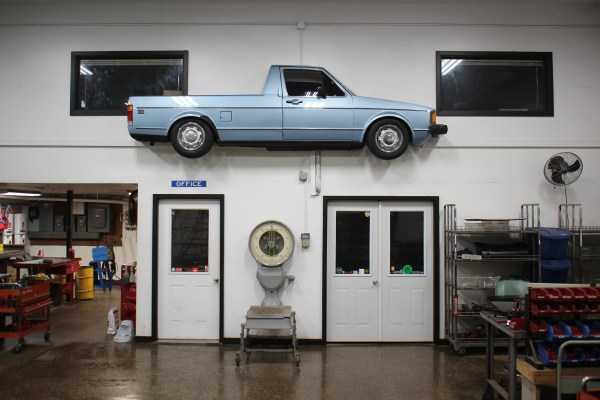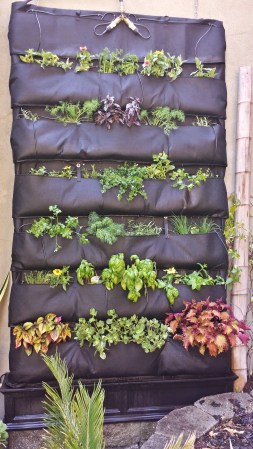Seeing a half car is always a disconcerting experience. Especially when that half car is about 14 feet up in the air. [PanasonicModelRC6015] — We’ll call him [RC6015] for short — has gone and mounted 1/2 (actually more like 1/4) of a VW Rabbit Caddy pickup MK1 up on his shop wall.
The caddy started life as a regular 1983 VW pickup. Unfortunately, the years had not been kind to it. The body panels were in good shape, but there were serious rust problems in the floors, strut towers, rockers, and control arm mounts. According to [RC6015], this is beyond “weld on few replacement panels”, though he’s been heavily questioned on it in his Reddit thread.
Cutting the truck down was easy – a reciprocating saw did most of the work. The VW has a unibody design, so there was still some frame there to hold things together. A 2×12 board then was then bolted from the front of the truck to the rear. This made everything stable and provided a solid mounting point. A second 2×12 was lag bolted to several studs on the wall. Then it was just a matter of lifting the truck into position and bolting the two boards together. We’re guessing the [RC6015]’s wall has solid wood studs. Don’t try hanging a 500 lb truck from the wall if you’ve only got thin metal studs behind your sheetrock.
Just in case you’re wondering, the Panasonic Model RC-6015 is a vintage flip display alarm clock, the same one Marty used in Back to the Future.
If a truck on the wall is a bit much for your shop, check out this wall mounted weather display.












